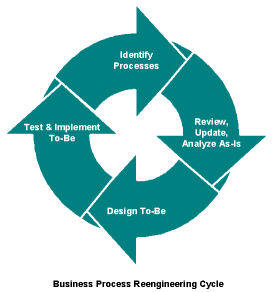The recent wave of closures and layoffs at Newspaper establishments like the Chronicle Herald is prompting observers to ponder the potential collapse of the Fourth Estate.

Nelson to Washington Post: "Hah hah! Your medium is dying!" – (S19E10)
Internet enthusiasts believe that the solution is for traditional print media to simply “get with the times” and “go online”. Some even go as far as suggesting that with the proliferation of social media and citizen journalism (blogs, podcasts, vlogs, twitter, etc.), the market demand for traditional news reporting is diminishing and will soon disappear.
I disagree with this view, and I believe that market demand will always be present for traditional news reporting, specially investigative reporting. Unpaid bloggers simply don’t have the resources or access to chase around a story for an investigative report, so they can never provide a viable substitute.
Saying that “the only way traditional print media can save itself is by going online and embracing the way of social media” oversimplifies (or fails to address) the various elements involved in making such decisions. This view simply suggests that the only saving measure is to change the medium of delivery.
To raise profit, any business must do one (or both) of the following:
A. Increase Revenue (Sell more units | sell to more people | raise unit price)
B. Decrease Costs
With advertisers holding back on spending, and a general demographical migration of audience from paid, subscription-based, print news consumption to free, on-demand, online news consumption, it appears that maintaining profitability by increasing revenue would be difficult at the very least.
This leaves the print industry with the option to pursue strategies aimed at decreasing costs to remain profitable. These cost cutting strategies can be applied to:
A. Content Delivery, and/or
B. Content Creation
Content Delivery:
I.e. increasing profit (or cutting costs) by modifying the methods used to deliver the content. This is the solution suggested by many internet and social media advocates.
Modifying the medium of content delivery can also fall under the “increase revenue” category. However, various current examples have proven that newspaper revenues from online advertising/subscriptions are a fraction of what the traditional paper copy yields.
This solution at its surface does not address the various demographic, geographical, and socioeconomic factors at play.
For example, in Nova Scotia, the demographical makeup of the population makes it difficult for Newspapers to simply decide to ‘go digital’.
According to the latest statistics (2007) of population estimates from the NS Finance department, a significant percentage of the population is in an age category that remains quite attached to paper formats. If we don’t count population aged 0 to 14 years as “news readers”, almost one-third of the remaining population is in the 55+ age category. This is the age category that largely contributes to the subscription revenue stream.

With the decline in advertising revenues, subscription revenues are now a growing contributor to the profit margin, and must be given its due consideration.
The 55+ age category remains attached to paper formats. It can be argued that it is much harder to ‘re-train’ this demographic to change their news consumption habits, or increase their existing adoption of internet media. A quick look at news media research studies and surveys easily confirms the age distribution of paper vs. online news readers.

So, while newspapers in regions with a larger percentage of a ‘younger’ population may conceive a viable switch to an online business model, papers like the Chronicle Herald are bound to cost-cutting options and innovations that are less flexible given the comparatively older demographic of their audience.
However, as previously mentioned, there are two aspects to the ‘News business’: Content Delivery, and Content Creation. The above limitations of demographics and technology adoption are shortcomings for cost-cutting strategies that target Content Delivery because they involve changing consumer habits that are outside the locus of control of a newspaper like the Chronicle Herald.
→ Locus of Control refers to the extent to which individuals believe that they can control events that affect them. Individuals with a high internal locus of control believe that events result primarily from their own behavior and actions. Those with a high external locus of control believe that powerful others, fate, or chance primarily determine events. (Wikipedia)
Content Creation:
On the Content Creation side, a number of strategic options are available for consideration. Any strategic changes to the business model of “content creation” are internal to the newspaper, and therefore are much easier to control and modify without negatively affecting the audience of the paper or asking them to change their consumption habits.
The increased control over the outcome alone makes cost-cutting strategies targeted towards content creation a better alternative to strategies targeted at changing the content delivery medium. Still, we must remember that content-creation and content-delivery strategies are not mutually exclusive.
So how can costs be reduced by tackling ‘Content Creation’? The answer is in good ole’ fashioned Business Process Re-engineering (BPR).

First, the various elements of content creation should be identified and analysed:
What the content is?
- Which content is syndicated, which content is local
- which content is based on press releases from 3rd parties (companies, government departments, etc.)
- Which content is regular reporting, and which is investigative reporting
How the content is created?
- What are the existing processes of writing, submitting, and printing content
- Are there alternative methods or technologies that can be adopted to better (and more cost-effectively) manage how the content is written, submitted, edited, proofed, and printed
Who creates the content?
- What kind of qualifications must be present in a reporter/writer/journalist to create each type of content identified in the previous analysis of “what the content is”
- Is staff distributed adequately to match the qualifications required to create each content type, or does the paper have $100 reporters writing content that can be equally created by a $50 reporter
- Can existing staff work with new technologies that the organization might introduce to cut costs and/or improve productivity?
- Can existing staff be retrained? Will they adopt the change or will they resist it?
- If existing staff can not be retrained or resist the change, does the paper have access to new staff candidates who possess the qualifications required for the content, AND have the know-how to use the new technology platform, AND are willing to work at an equivalent (or cheaper) rate to the old staff.
Where the content is created?
- Does creating the content require a central physical space to house the creators (an office) or can the creators work off-site (e.g. telecommute)
- Which staff must have a physical presence at an office
- What operations/resources are required to create the content? Are they accessible only at a central physical location? Can they be digitized and provided online? Can they be outsourced?
- What is the cost-benefit analysis of changing the business model from creating content on-site to content creation off-site (savings on office space vs. cost of deploying new technology and processes to support off-site content creation and retraining staff)
The point of the above exercise is to create a new business model that:
A. Keeps providing quality news reporting
B. Removes non-vital expenses through achievable technology adoption (telecommuting, online authoring and collaboration tools, video conferencing, etc.)
C. Realigns human resources to maximize productivity by matching experience to the content that requires it, and trimming staff that is unable or unwilling to adapt to the new business model (deadwood).
By doing the above, traditional print newspapers can emerge as a leaner and more responsive business machine. They can cut costs, remain positioned for online delivery, and continue to cater to their traditional paper market.
Related posts:
- Battle For Advertising Dollars: New Vs. Old Media
- Simpsons Episode Criticizing Print Media
- Halifax Transit Bus Authority Censors Godless Ads – Local Media Silent



